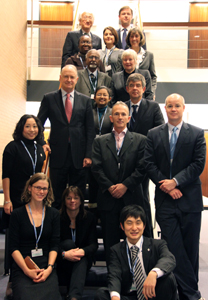High-level panel releases large body of research on CDM

High-level panel releases large body of research on CDM
(Bonn, 31 October 2012) – The results of an extensive research programme on the Kyoto Protocol’s clean development mechanism (CDM) have been released today by the high-level panel on the CDM policy dialogue.
The panel was established to conduct an independent review of the lessons learned from the CDM to date, and to assess if and how the CDM may continue to have a role beyond 2012. The panel’s final report, which was released in September, included 51 specific recommendations on how to position the CDM for the future. The wide research materials underpinning the recommendations are now released in their entirety.
This wide-ranging research programme commissioned by the high-level panel on the CDM policy dialogue was undertaken by several teams of researchers with expertise in a range of areas related to the CDM.
The research is presented in three main reports on the impact of the CDM, the governance of the CDM, and the future context for the CDM. In addition, eleven topic-specific reports have been released in areas ranging from the sustainable development impact of the CDM and the financial set-up of the mechanism to the potential for cooperation with the Green Climate Fund and the potential for REDD in the CDM.
A summary report of all the stakeholder meetings undertaken by the high-level panel is also included in the released materials.
About the CDM
The clean development mechanism (CDM) allows emission-reduction projects in developing countries to earn certified emission reductions (CERs), each equivalent to one tonne of CO2. CERs can be traded and sold, and used by industrialized countries to meet a part of their emission reduction targets under the Kyoto Protocol. There are more than 4880 registered CDM projects in 81 developing countries. To date, more than one billion CERs have been issued.


Offset now: visit the United Nations Carbon Offset Platform
Connect with us: